Shellfish
Eastern Oyster, Crassostrea virginica
Common name: Eastern oyster
Latin name: Crassostrea virginica
Average Lifespan: up to 20 years 4
Habitat: set onto rocks, other structures4
Diet: Filter feeder
Geographical range: Canada to Brazil, Atlantic Coast3,4
Salinity and Temperature range: 10-28ppt salinity and -1 to 36 °C2
General Information: Oyster beds are a good habitat for other organisms1. Newly settled juveniles are called “spat”.2 Widely cultivated for food and restoration purposes.3
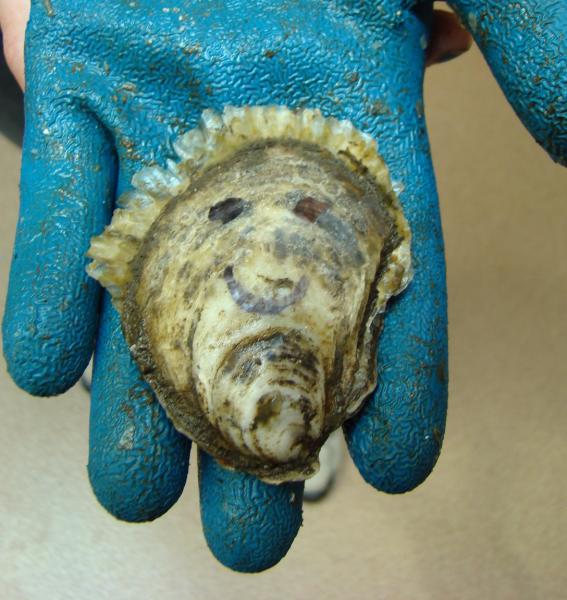
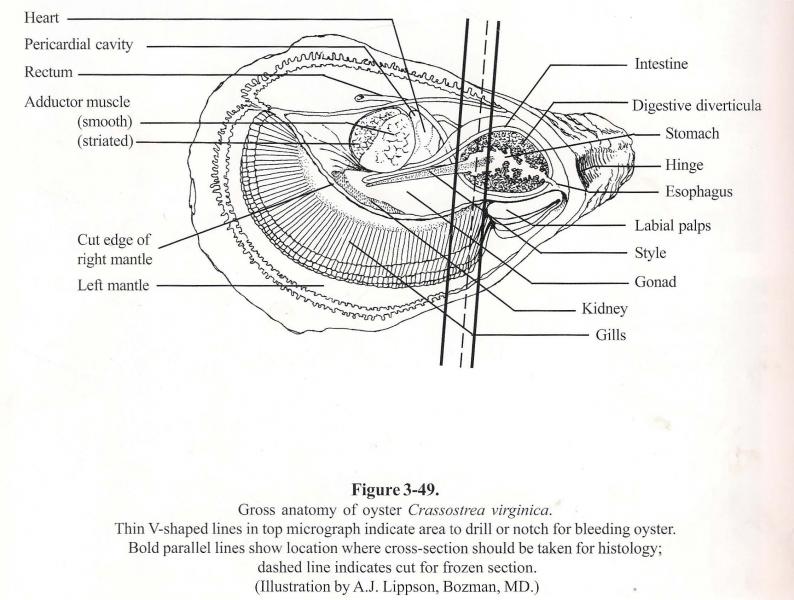
Howard DW, Lewis EJ, Keller BJ, et al. Histological Techniques for Marine Bivalve Mollusks and Crustaceans. NOAA Technical Memorandum NOS NCCOS 5. Washington, DC: National Oceanic and Atmospheric Administration; 2004.
Quahog, Mercenaria mercenaria
Common name: Quahog, Hard clam
Latin name: Mercenaria mercenaria
Average Lifespan: 12-20 years, can live up to 40 years4
Habitat: Intertidal and subtidal zone, burrows into sandy/muddy sediment1,5
Diet: Filter feeder2
Geographical range: Canada to Gulf Coast of Texas along the Atlantic Coast6
Salinity and Temperature range: 20-35ppt1 (as low as 10ppt for short periods of time6), 18-25°C8
General Information: Clams grow to a commercial size within 2-5 years, depending on water quality and food resources. They become sexually mature at 2-3 years. There are different size classes, classified by the length of the shell: Seed clams: < 1"; Beans: 1.0 - 1.5 "; Buttons: 1.5 - 2.0"; Littlenecks: 2.0 - 2.5"; Topnecks: 2.5 - 3.0"; Cherrystones: 3.0 - 4.0"; Chowders: >4.0".6Through investigation of growth lines in ancient clam fossils, it was found that 500mya there were two more days per month then there are now, showing that the Earth is gradually slowing its rotation around the sun.9 Quahog shells have also been used as Native American currency, known as wampum. Wampum beads are used in jewelry.
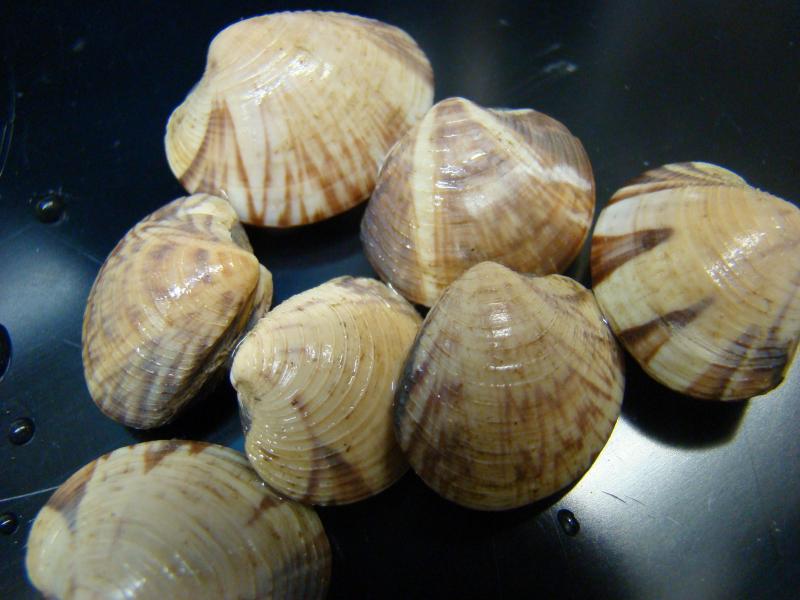
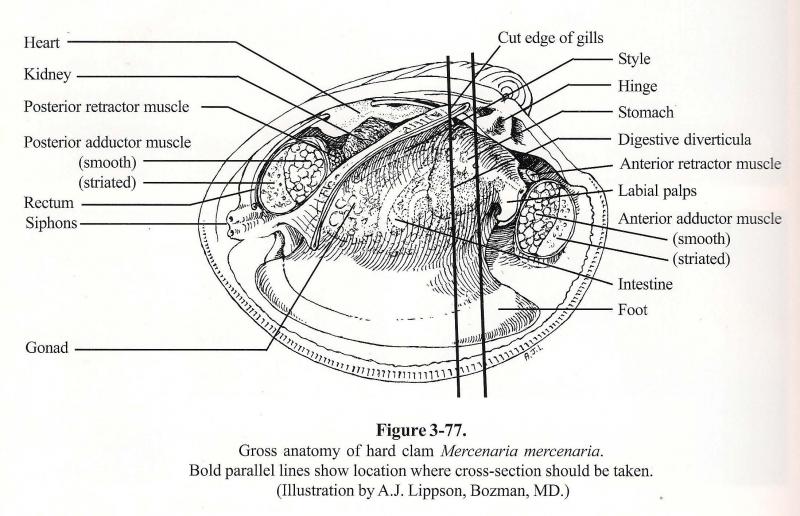
Howard DW, Lewis EJ, Keller BJ, et al. Histological Techniques for Marine Bivalve Mollusks and Crustaceans. NOAA Technical Memorandum NOS NCCOS 5. Washington, DC: National Oceanic and Atmospheric Administration; 2004.
Soft Shell Clam, Mya arenaria
Common name: Soft Shell Clam
Latin name: Mya arenaria
Average Lifespan: 10-12 years
Habitat: Soft sediments2
Diet: Filter feeder1
Geographical range: Canada to Southern USA on the Pacific and Atlantic Coasts4,6
Salinity and Temperature range: 5-30ppt (can survive in estuaries1), 4-25°C4
General Information: Shells are made from calcium carbonate, which is softer than the hard shell clam. This does not mean that their shells are as malleable as rubber, but the calcium carbonate is easier for some predators to drill through. Unlike other bivalves, the soft shelled clam cannot completely retract their siphons into their shells.3 They can survive without oxygen for several days, using its shell as an alkaline reserve to neutralize harmful byproducts of anaerobic metabolism.5
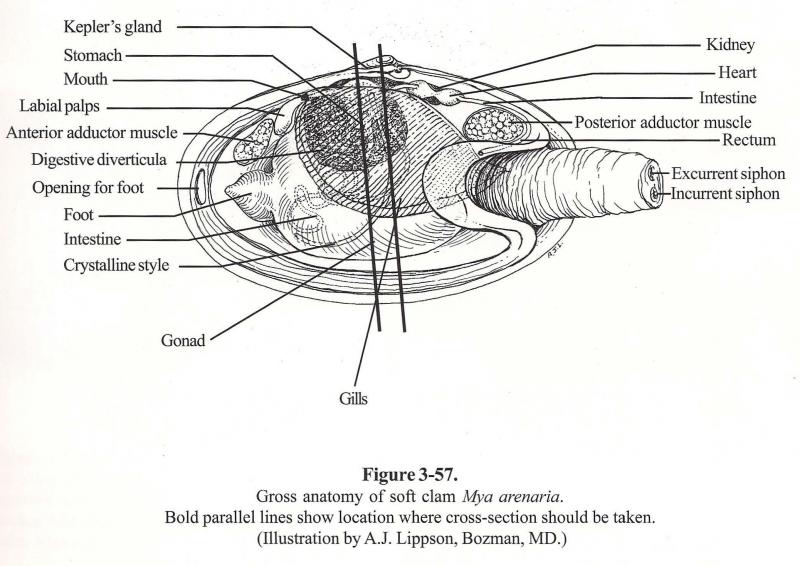
Howard DW, Lewis EJ, Keller BJ, et al. Histological Techniques for Marine Bivalve Mollusks and Crustaceans. NOAA Technical Memorandum NOS NCCOS 5. Washington, DC: National Oceanic and Atmospheric Administration; 2004.
Bay Scallop, Argopecten irradiens
Common name: Bay Scallop
Latin name: Argopecten irradiens
Average Lifespan: 1-3 years1
Habitat: Moves freely along the seafloor, subtidal zone1
Diet: Filter feeder Geographical range: Massachusetts to Texas2
Salinity and Temperature range: Best around 20 °C, 20-30 ppt3
General Information: Bay scallop shells can exhibit a wide variety of colors. There are many blue eyes along the edge of the mantle.1
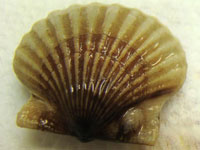
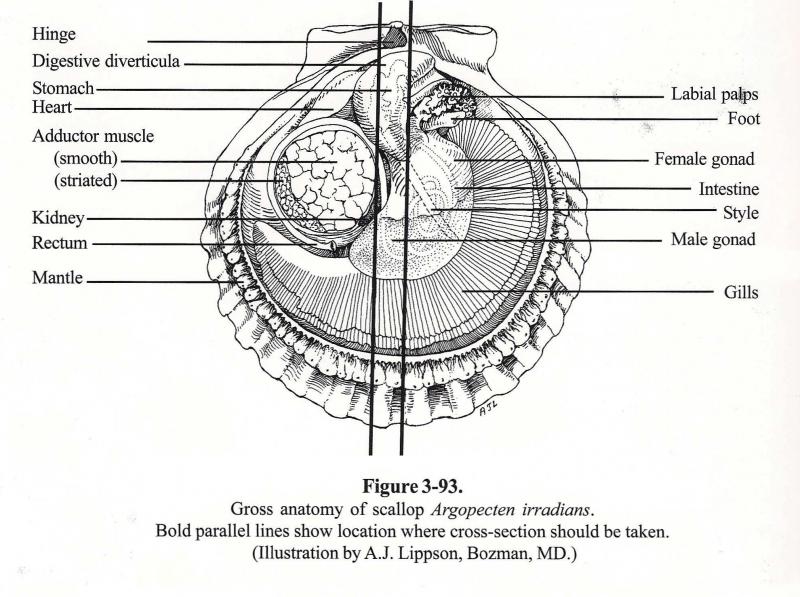
Howard DW, Lewis EJ, Keller BJ, et al. Histological Techniques for Marine Bivalve Mollusks and Crustaceans. NOAA Technical Memorandum NOS NCCOS 5. Washington, DC: National Oceanic and Atmospheric Administration; 2004.
Sea Scallop, Placopecten magellanicus
Common name: Sea Scallop
Latin name: Placopecten magellanicus
Average Lifespan: 6-8 years
Habitat: Live in the deep sea (20-200m)2
Diet: Filter feeder Geographical range: Canada to North Carolina, Atlantic Coast3
Salinity and Temperature range: 15-25 ppt (Juveniles >25ppt, adult ideal is 16.5ppt), Optimum temp is 10°C.1
General Information: Sea Scallops are gonochoristic (animals are separate sexes), unlike Bay Scallops, which are hermaphroditic.
Blue Mussel, Mytilus edulis
Common name: Blue Mussel
Latin name: Mytilus edulis
Average Lifespan: 2-3 years on average, can live up to 15-20 years if there is no predation1
Habitat: Subtidal and intertidal zone.1 Range on substrate is limited by predators.2
Diet: Filter feeders4
Geographical range: Coastal Atlantic Ocean1
Salinity and Temperature range: 15-30ppt, 5-20 °C4
General Information: Can be used in jewelry because of their opalescent shells. They are a common fouling organism.3 They have byssal threads for strong attachment to the substrate.Heavy metals inhibit byssal thread formation, providing a good indicator of lead in the water.3
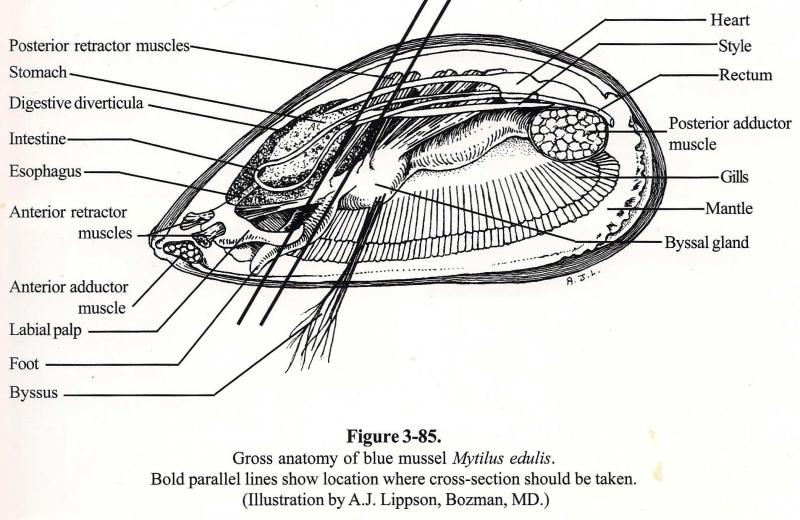
Howard DW, Lewis EJ, Keller BJ, et al. Histological Techniques for Marine Bivalve Mollusks and Crustaceans. NOAA Technical Memorandum NOS NCCOS 5. Washington, DC: National Oceanic and Atmospheric Administration; 2004.

